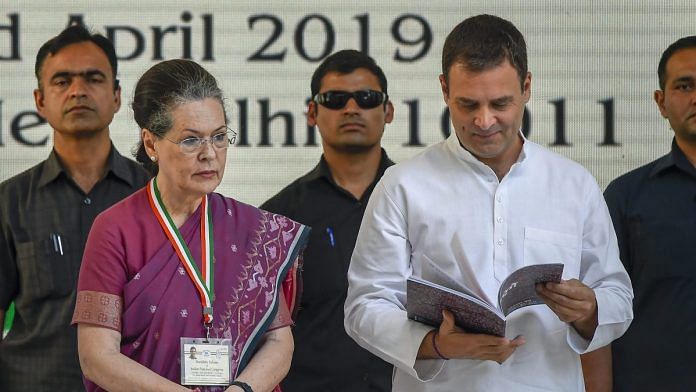Case for compassion
Shah Alam Khan | Professor, department of orthopedics, All India Institute of Medial Sciences
The Indian Express
Khan writes on the ongoing strike by doctors in different parts of the country but believes that there’s a larger issue to be addressed here — the “institutionalised violence” unleashed on its victims through “religion, caste, politics, economics and gender discrimination”. He highlights the ways in which the health system operates in India which makes incidents such as those seen in Kolkata a reality.
Khan explains certain factors that trigger such incidents including the ignorance of the “intellectual class”, including doctors, as to how “common” it is that violence is used as a means to provide “justice” in India. Khan also focuses on the plight of doctors in India who work very long hours – he pleads that they ought to direct their anger not at patients but the “systemic failures” that creates “infrastructure shortage”. He suggests that young doctors in India be “sensitised” to “social prejudices”.
Qualifying for Leader of the Opposition
Subhash C. Kashyap | Former secretary general of the Lok Sabha
The Hindu
Kashyap explains factors taken into consideration for the appointment of the Leader of the Opposition (LoP) in general, and specifically for the 17th Lok Sabha. He argues that even though there exist provisions such as the 1977 Salary and Allowances of Leaders of Opposition in Parliament Act — it defines who a LoP is — and the Direction 121(C) which directs one of the conditions required for a party to be called the Opposition, there are no provisions in either the Constitution or even the Lok Sabha Rules of Procedure that lay down guidelines for how a LoP should be selected. He says that the practised tradition of recognising the leader of Opposition based on the 55-seats condition in Lok Sabha set up by the 1977 law is not an “essential pre-requisite”. One way to reconsider this entire process is by replacing the word “party” by “pre-poll alliance”. He recommends that the Speaker select the LoP on this criteria of pre-poll alliances which have come to gradually acquire greater “credibility” and “legitimacy”.
The world is fat and slow
Ruchir Sharma | Author and global investor
The Times of India | Originally published in The New York Times
Sharma writes that even as the world, particularly the US, marks 10 years of recovery from the disastrous impact of the 2008 Great Recession, there is little to celebrate as the pace of recovery since then has been abysmal, and accompanied by a drastic reduction of the rate of economic growth both in the US — at 2 per cent since 2008 — and worldwide, at 3 per cent. He holds the prolonged execution of “government rescue programmes” and their “unintended consequences” responsible for these damages. Sharma writes that as part of efforts to revive economies, governments resorted to protecting only domestic companies, and central banks printed notes and provided low investment rates leading to the rise of “zombie firms” that crushed competition and promoted growth of few start-ups. These factors have undermined productivity and slowed economies of countries worldwide, he believes.
Trump’s trade tantrums and a delicate balancing act for India
Vivek Dehejia | Associate professor, Carleton University
Pravin Krishna | Chung Ju Yung distinguished professor, Johns Hopkins University
Mint
With the US deciding to withdraw the generalised system of preferences (GSP) status to India, President Donald Trump has drawn a clear distinction between friendship and commercial interest, write Dehejia and Krishna. India’s strategic interests involve greater economic alignment with the US and negotiating trade disputes with an unpredictable but powerful partner will require a delicate balancing act. While an aggressive response from New Delhi could prove detrimental, not reacting could also be perceived as weakness. India needs to reflect on the optimality of its own trade policy choices. “Unilaterally eliminating tariff spikes and harmonizing the tariff regime to a low and simple single rate system (of a revenue-preserving 5-7%)” will help the Indian economy, they say.
Stabilising stressed firms
Ajay Shah | Professor, National Institute of Public Finance
Business Standard
Shah writes that India has a matured and capable financial ecosystem compared to 10 or 20 years ago. But in many cases the early moves of deleveraging to meet debt repayments do not stabilise the firms and access to fresh debt too remains blocked. Formal mechanism of a bankruptcy process helps and under the Insolvency and Bankruptcy Code, a resolution process is initiated. A key weakness in the environment, however, is the lack of a “sensible” bond market. “When credit risk goes up, it should be associated with costlier borrowing and not a collapse in credit market access,” Shah writes. He says the collapse in bond market access is the main problem that has led to the present situation. Bond markets reforms are the solution, he says.
Pick on cherry-picking
K. Vaidya Nathan | Faculty director, postgraduate programme in finance, Indian School of Business
The Economic Times
Quoting Noble laureate Ronald Coase — “If you torture data long enough, it will confess to anything” — Nathan says that while former chief economic adviser Arvind Subramanian has cast aspersions on GDP data, prima facie, it seems to be a case of data torturing. He says Subramanian, who has also made self contradictory claims, has chosen to split the empirical analysis as pre-2011 and post-2011. “A closer assessment of the choice seems like data mining to get preferred inferences and the author cherry picks 2011 for empirical convenience,” writes Nathan. He concludes by saying that India’s GDP estimation process is not whimsical and has enough checks and balances in place. The new GDP methodology is globally more comparable as it takes into account a deeper and greater representation of the Indian economy.






